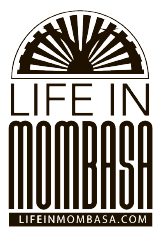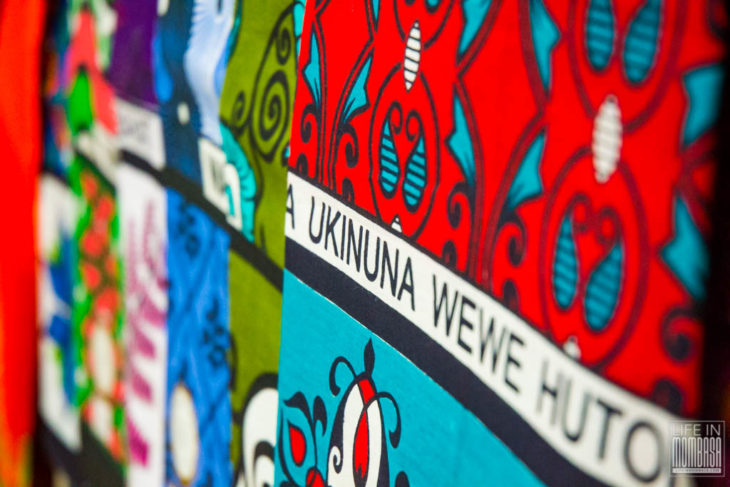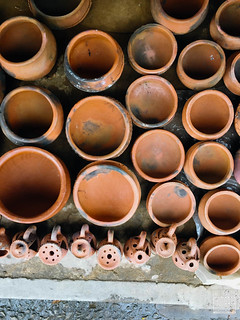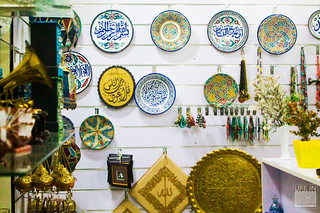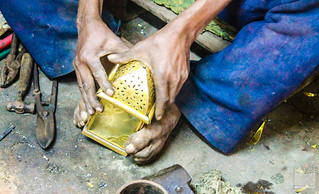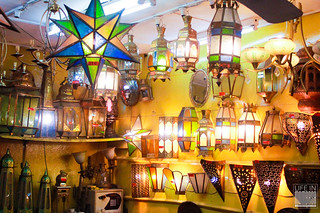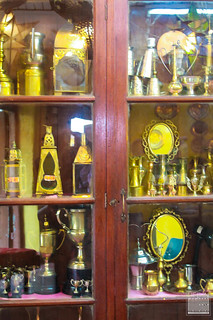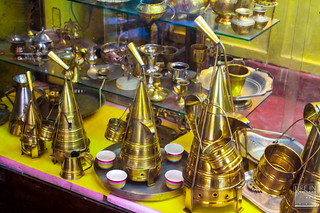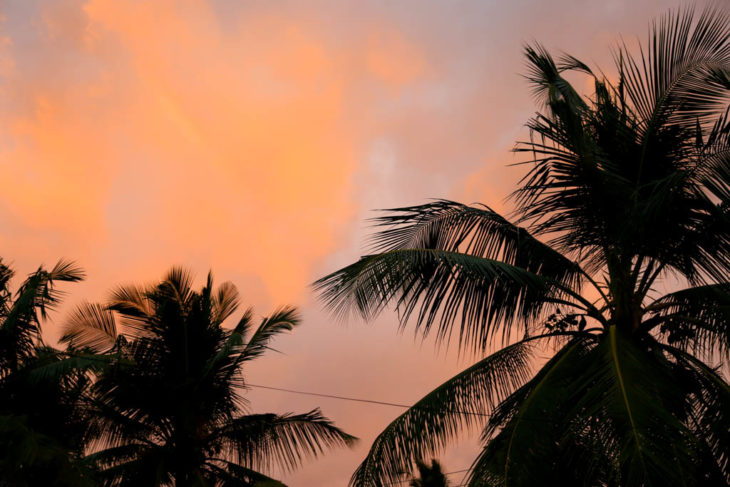The leso, or kanga, is a symbol of Swahili culture since the very beginning. The long fabric made of cotton and printed with elaborate design and border then finished with a Swahili proverb expresses emotion, femininity, beauty, and power. It is one of the very few things that is distinctly, and purely Swahili with little to no influence from outside sources save for the method of the making of the leso. When we take a closer look at the history of the kanga, we owe it to the women of the coast for giving us the gift of the kanga. It was in the 19th century that Swahili women took the cloth, that was at the time being imported by the Portuguese, cut it to two pieces and began dyeing them in indigo -which was the colour available at the time- or putting patterns on them to decorate and give it a more feminine touch. What was the reason for this?
At the turn of the century, due to British colonization, slavery had been abolished in the coastal town along the East African coast. Women from Zanzibar onwards were now free, and what do women do when they get freedom? Shop, of course. Women were now empowered, and were able to live the life they really wanted. To express themselves in ways they never had before, and the easiest way to do so was through fashion and appearance. Originally, the leso was just a white plain cloth worn by slave men and women to distinguish themselves from the Arabs who owned them, but upon coming across the new found freedom, they redeemed the clothes worn, began printing elaborate and beautiful designs on them, cutting and sewing them into dresses, turbans, pants, and making a visually striking statement that says ‘I am a free woman.’ And the statement was made. Lesos were a fashion icon worn now not just by slaves, but every fashion conscious woman in the coast. It showed luxury, style, and class. It wasn’t until much later on that the Swahili proverbs were put on the leso. The proverbs were at first written in Arabic letters as that was the way Swahili was written pre-colonization. The proverbs were then changed to Latin letters and every leso had a beautiful proverb to express the feelings of the giver, to the receiver.
The leso had also become a symbol of wealth. Swahili women upon marriage were told to invest in leso as a sort of ‘insurance’ for if their marriage falls out, for when all is lost, you can sell your gold or leso to insure you have wealth and are not down and out, left at the mercy of a man’s wallet. The kanga is much more than just a piece of cloth to add to beauty, and we should as the new generation work to ensure the importance of the kanga does not get lost.
When in Mombasa, check out the various shops in Mwembe Kuku that sell leso, kitenge, and other local Swahili clothing items. When in the shops, ask about the process of making the beautiful designs, the shop owner will be glad to explain to you.



